


An earthquake is the very literal name of the phenomena of the surface of earth shaking due to seismic activity happening beneath the crust! These seismic waves, created by the Earth’s lithosphere (upper crust and mantle), cause the various tectonic plates that make up the upper-most part of the Earth to shudder which, in turn make the ground we stand on begin to shake violently. There are various different levels for earthquakes and various different circumstances they require to occur, but overall earthquakes are known for being massive destructive forces that have wreaked havoc upon countless countries, islands, cities, and even the moon!
Earthquakes are phenomena that are important to study in order to help prevent the disastrous fallout they can create. But how do earthquakes happen in detail? And what more is there to learn about them? Well, come along with us to learn all about these earthquake facts for kids!
To answer that, we need to look at what’s going on beneath the Earth’s surface! The Earth is made up of four main layers: crust, mantle, outer core, and inner core. Together, the crust and mantle form the Earth’s lithosphere, which acts as a solid outer shell. This shell isn’t one continuous smooth surface, though, like an eggshell; it’s more akin to an enormous rocky jigsaw puzzle in which some pieces span entire countries and continents. Below the lithosphere is the outer core, a hot metallic liquid made up of mostly nickel and iron. And at the center of the Earth, nearly 2000 miles below the surface, lies the inner core, a dense, molten ball of compacted iron, the temperature of which is believed to be around 9,000 °Fahrenheit.
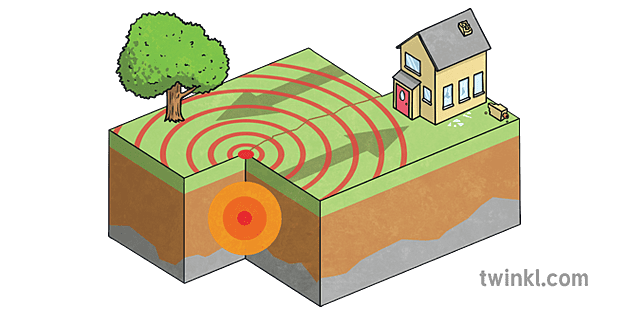
So, how do earthquakes occur? Well, it’s all about how those different parts of the lithosphere interact with one another. Known as tectonic plates, these huge pieces of rock are constantly changing positions due to movement in the mantle below and the planet’s steady rotation. The constant motion of tectonic plates can cause cracks, known as faults, in the Earth’s crust. Earthquakes occur when the crust moves suddenly on or near one of these fault lines.
Here's how it happens, step by step:
Most earthquakes typically last for a few seconds, usually 10-30 seconds. It is assumed that a larger earthquake than we have ever experienced may last minutes at a time, but for the most part earthquakes typically last about half a minute or less! This may feel like a lifetime if you find yourself caught in the center of one, but know that it will soon end faster than you expect! After the earthquake, the ground may tremor slightly still for a few more hours, days, or years even. These shudders are called aftershocks!
Aftershocks or aftershock earthquakes are the after effects of past earthquakes. These slight tremors can last for up to years at a time and are in reality the earth’s mantle trying to realign itself after the small fault or crack that caused the initial quake. These aftershocks will never be as extreme as the earthquake which caused them, but can still be quite devastating if left unexpected.

Like most of the scientific world, earthquakes are oftentimes categorized by specific types and levels. The strongest earthquake you can experience is anything above an 8.0 magnitude. At this level, the earth shakes violently and communities near the center of the earthquake’s origin will most likely be destroyed. Usually, though, people will experience a magnitude of 5.4 and lower.
As for types, there are four in particular that you can usually classify an earthquake as: volcanic, tectonic, collapse and explosion.
Earthquakes are devastating natural events that can completely destroy the areas they affect. Here is a list of some of the most powerful and destructive earthquakes throughout history:
The first earthquake on this list dates all the way back to Ancient Greece. As this earthquake was so long ago, there is no exact recording of its magnitude or intensity, but it is known to be one of several events that completely leveled the capital of Minoan civilization.
Jumping forward a few years to Ancient Italy, these two important Italian cities were struck by the same earthquake in 62 C.E. This earthquake was so devastating that neither Pompeii or Herculaneum had recovered from its aftermath by the time Mount Vesuvius erupted in 79 C.E.
This devastating earthquake that hit China back in the mid 1500s is widely regarded as the deadliest earthquake of all time. The quake caused 830,000 deaths and completely destroyed the Shaanxi province.
Prior to the earthquake that struck this very famous British West Indies port in 1692, Port Royal was a popular haven amongst pirates and slave traders of the time. When the earthquake struck, however, 2,000 people were killed and the entire port was pretty much submerged beneath the sea.
The earthquake that struck Lisbon in 1755 was not restricted to this one city. In fact, this deadly earthquake was felt as far away as the Algiers and triggered a tsunami that reached the Caribbean. The total amount of deaths caused by this earthquake was recorded as 62,000.
This earthquake goes down as one of the largest quakes to ever hit the eastern United States. The total amount of deaths recorded for this earthquake was 60.
Whilst the earthquake that hit the Gansu province in the early 1900s was severe, the majority of the deaths surrounding it were actually caused by the massive landslides that followed. In total, there are 200,000 deaths associated with this earthquake and the following events that it triggered.
The massive earthquake that hit Assam in 1950 is marked down as the largest quake ever recorded in South Asia. Despite its size, the death toll for the earthquake was relatively small, with only 574 people losing their lives. This is largely due to the fact that this region along the Indo-Chinese border is pretty sparsely populated.
In more recent years, the earthquake that hit Nepal in 2015 measured in at 7.9 on the Richter Scale and killed 9,000 people. This quake was closely followed by two similarly devastating aftershocks, each coming in at 6.6 and 6.7 on the Richter Scale respectively.
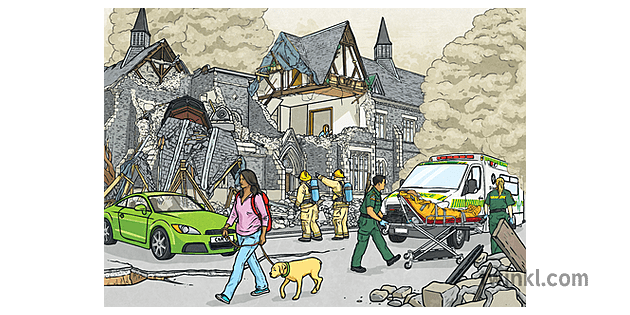
Earthquakes are measured by scientists using seismographs, or seismometers. They measure the earthquake's size and intensity. These specialist devices measure how strong an earthquake is by picking up vibrations and movement — the seismic waves — in the Earth’s surface. Seismologists (those who study earthquakes) used to use the Richter Scale to measure the earthquake's strength. The Richter scoring system runs from one through 10, with one representing a very minor tremor and 10 indicating an extremely severe earthquake. The worst earthquake ever recorded was a 9.5 on the Richter scale — earthquakes of this size aren't as common as the smaller ones (which are often not even felt by people on the ground) but can cause massive amounts of destruction.
Today, scientists measure earthquakes using the Moment Magnitude Scale which is more accurate than the Richter scale when measuring large earthquakes.
Did you know the term seismology comes from the Greek “seismos” meaning earthquake? The awe-inspiring nature of earthquakes means that you’ll often hear people use the word “seismic” to describe sudden and significant events that have a big impact on our lives, like the outbreak of war or political unrest.
The most powerful earthquake ever recorded struck Valdivia, Chile, just after 3 p.m. on May 22, 1960. It left two million people homeless and killed over 1600. The Valdivia earthquake set off a tsunami that was so strong, it reached the coast of New Zealand over 5000 miles away.
Earthquakes can happen anywhere in the world, and in fact there are earthquakes every single day, we just don’t feel them usually. The places in the world where you will most certainly experience a major earthquake more than once would be places along fault lines. Fault lines are usually the edge of the tectonic plates and occur when different plates grind against each other. This movement beneath the earth’s surface is what we know as an earthquake, so fault lines in particular tend to generate much more obvious quakes than the center of a tectonic plate might.
There are three known types of faults: normal, reverse, and strike-slip. Normal faults are when one wall of a tectonic plate moves upwards while the other moves downwards, causing the tremors on the surface and developing the fault. Reverse faults form when the Earth’s crust receives a significant amount of pressure. This compression causes rocks and tectonic walls to slip underneath one another, creating tremors and the fault! Finally, the strike-slip fault is formed when two sides of plates or the crust slide past one another, causing a fault and an earthquake. Strike-slip faults are most commonly found in California!
Speaking of California, because of its placement on top of various fault lines, it is perhaps one of the most earthquake-stricken states in the United States!
There are many ways to protect yourself during an earthquake, though many of them are chalked up to one major tip that everyone who lives in a place where earthquakes are frequent has: always have an earthquake plan! An earthquake plan is a plan developed by a family to ensure they will always be safe during a possible earthquake. Most earthquake plans involve a meeting place for after the quake settles, numbers to call in case people get separated, a few to-go backpacks filled with nonperishable foods, water, and more, and reminders of earthquake safety basics!
But what are those safety tip basics? Well, most West Coast natives may be well aware of them, but for those who aren’t, here are five tips for earthquake safety that will surely save you from any unnecessary danger during a quake!
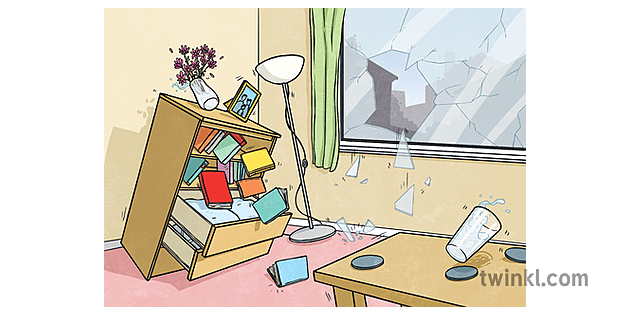
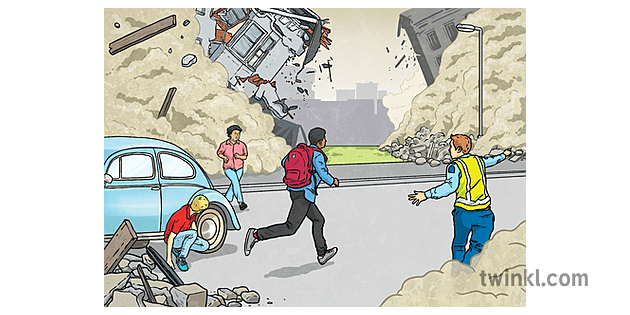
Use this super fun video to further educate and engage your kids while learning about fun earthquake facts and more!
H2 Earthquake Resources for Kids
Earthquakes are cool and all, but how do you keep your students engaged while learning about them? Well, Twinkl is here to help! We have a vast collection of amazing resources, activities, presentations, and more to help teachers and parents alike prepare their kids for whatever school throws at them! Here are some of our favorite Earthquake resources for kids!:
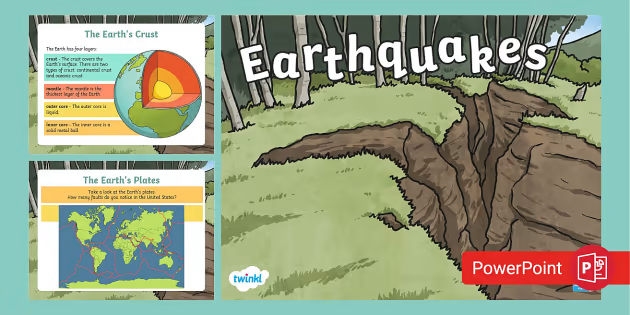
Introduce your students to what exactly earthquakes are with this handy-dandy Earthquakes PowerPoint! This presentation features beautifully drawn illustrations along with facts and statistics that will interest your students to learn more! Use this as an introduction to a unit on earthquakes and the Earth in general!
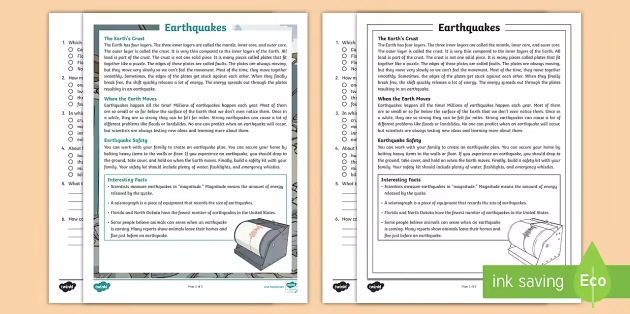
Third Grade Earthquakes Text Activity
Perfect for your third grade readers, this Third Grade Earthquakes Text Activity is a great differentiated reader that allows your students to learn all about earthquakes while practicing their reading comprehension! You can use this activity during an English Language course or a Science course with an earthquake unit!

Have a fun earthquake experiment to do with your class using our Earthquake Science Experiment Activity! This great experiment is teacher-made and uses some of the easiest to obtain materials so it is possible for anyone to recreate an earthquake in their own class or home!